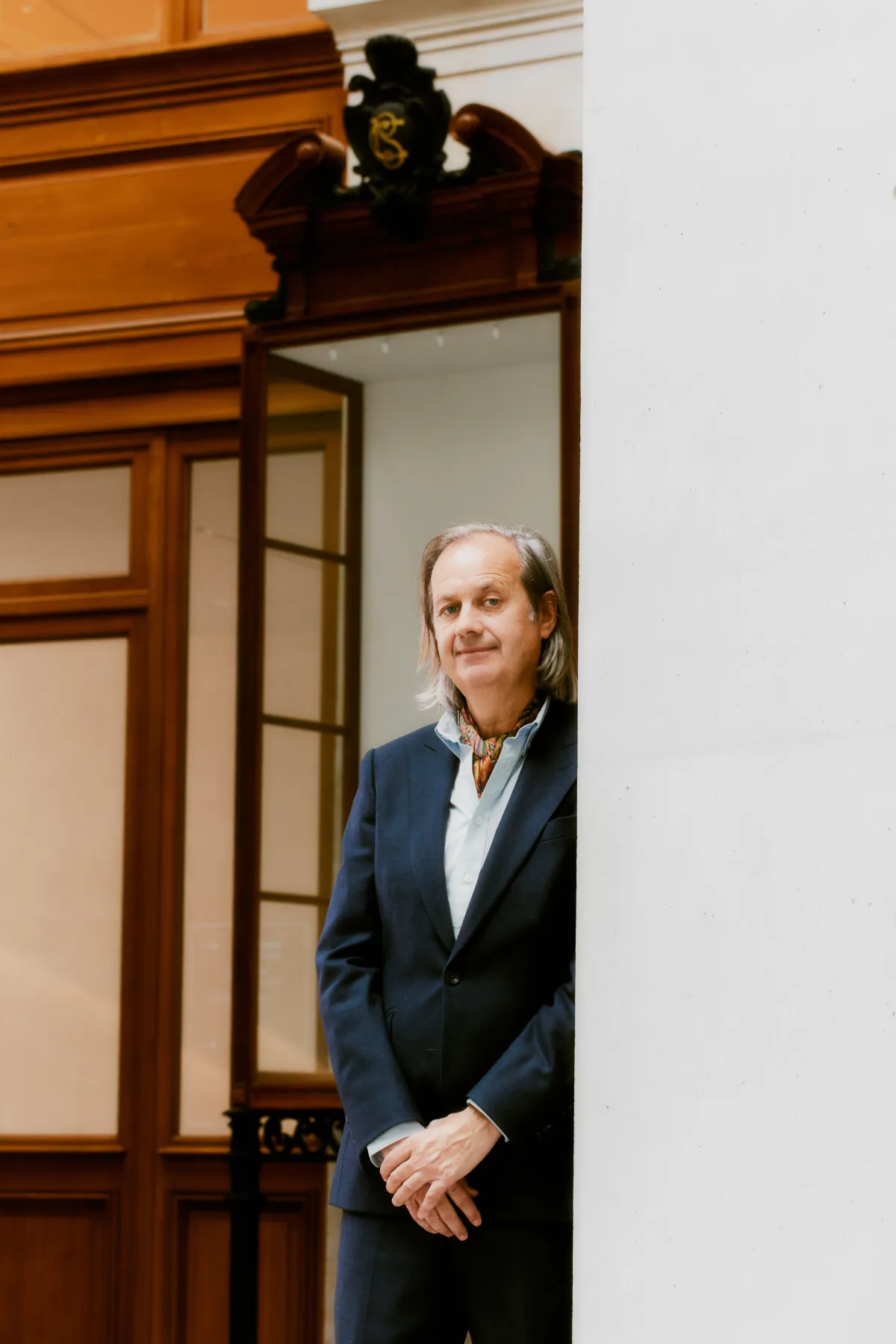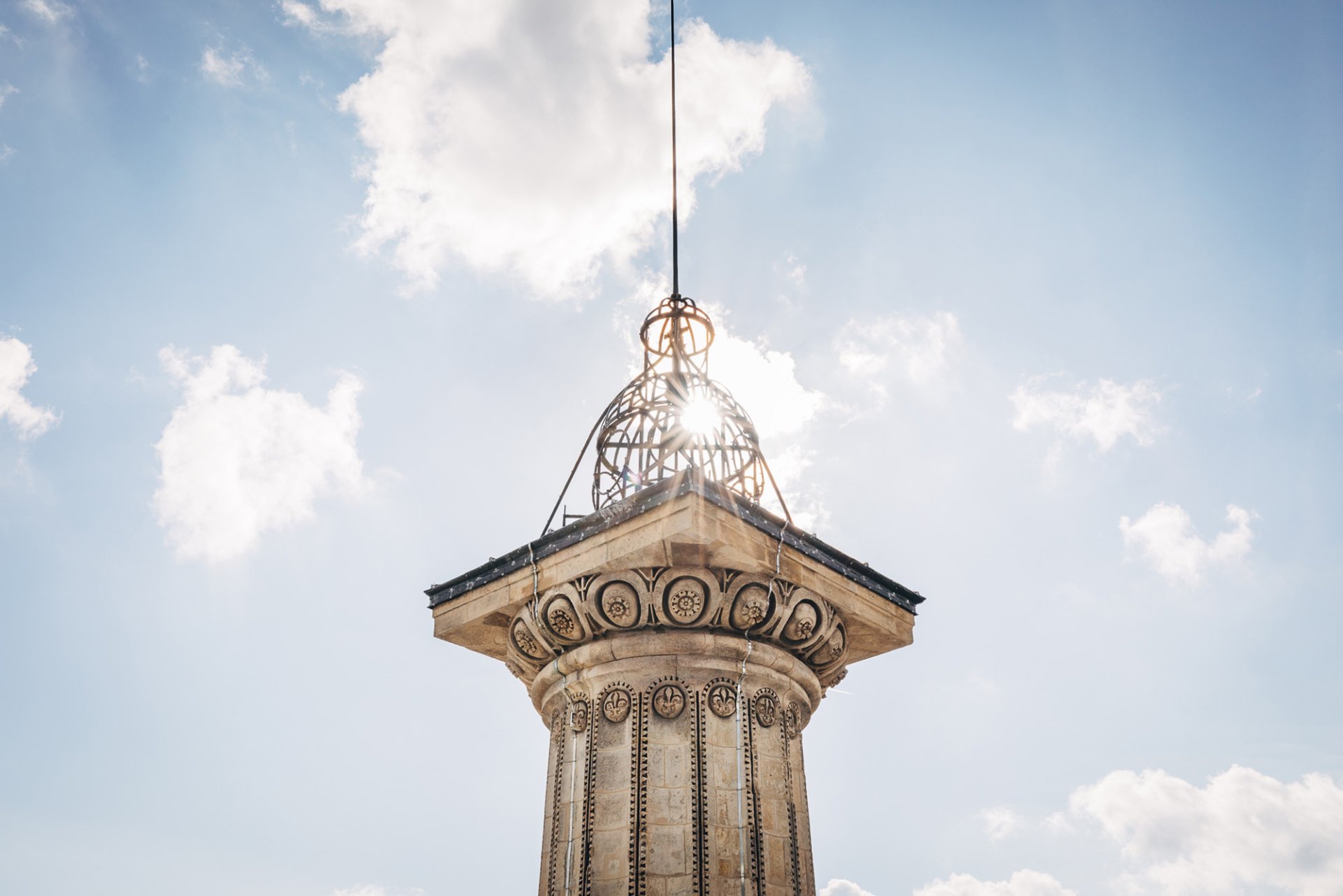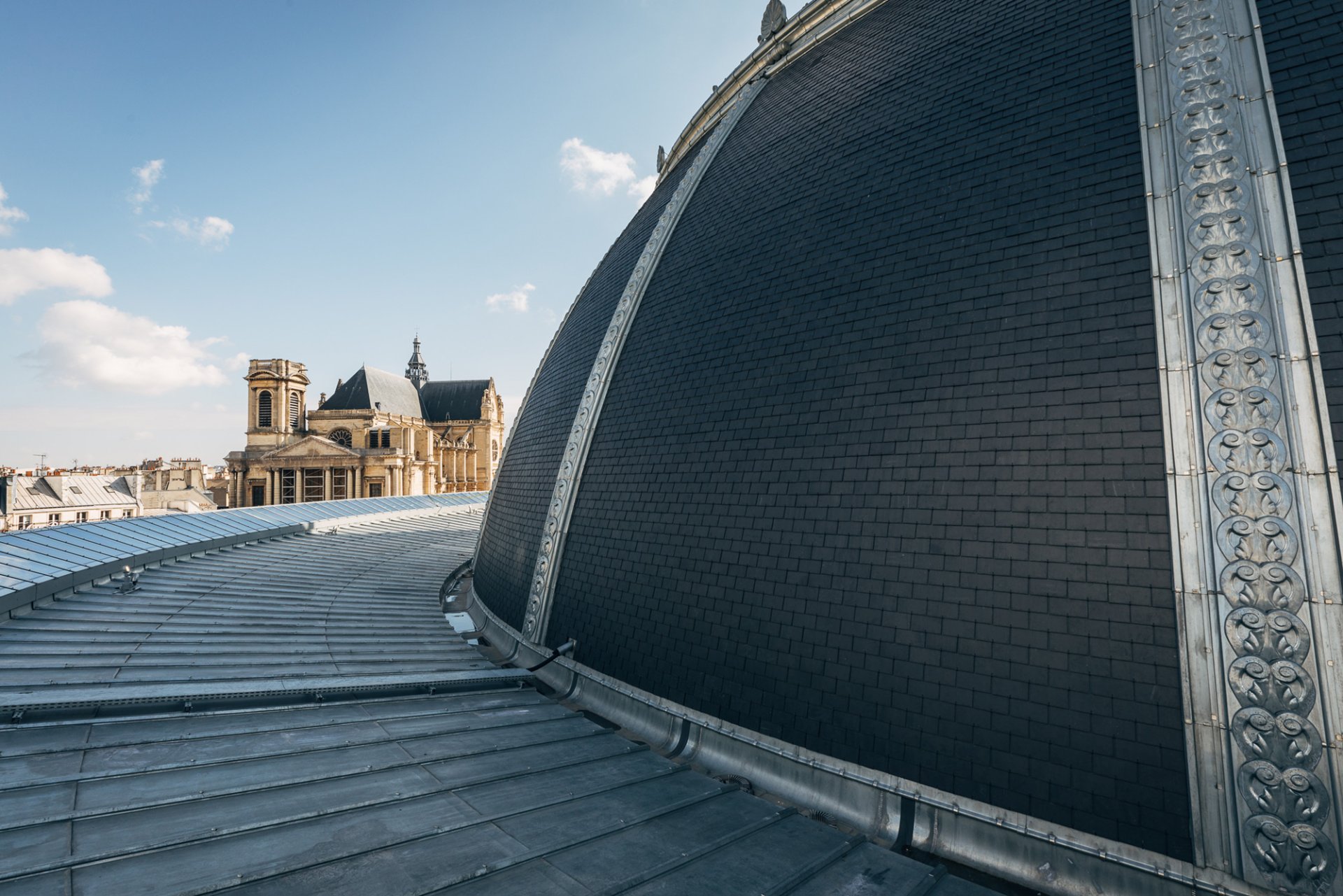
Pierre-Antoine Gatier: “Everything is a challenge in a restoration project.”
Pierre-Antoine Gatier, Head Architect with France’s Monuments historiques, looks back on the restoration and conservation work on the Bourse de Commerce — Pinault Collection.
What does an architect of historic monuments do?
A head architect of historic monuments is responsible for the conservation of great historic monuments and subsequently works with some of the most beautiful buildings that have marked the history of art and architecture, as well as newer, even surprising buildings. The architect of historic monuments also works closely with talented and passionate craftsmen and dedicated contractors. It is a great opportunity, but beyond that, it is a responsibility, that is to say to ensure that what has been given to us by History is preserved and passed down to the next generations.
What is the difference between a classified and a listed building?
Since the start of the 19th century, we have come to the realization that within architecture and architectural production, there are buildings that belong to us all: these are historic monuments. A value scale has been established; there is a first level with listed buildings and the maximum protection is the “historic monument” classification. The Bourse de Commerce is the witness of this great history. It is an architectural structure, but we could also refer to it as an assemblage. The Medici Column was classified a historic monument in 1862, practically the same year that saw the birth of the Historic Monuments Service in France and the classification of both Notre-Dame Cathedral and Chartres Cathedral. Classifying the Medici Column at this time was an essential gesture. The Column was classified because it is a Renaissance masterpiece. Indeed, the history of the Bourse de Commerce actually bears witness to our ability to look back at the 19th century. It wasn’t until the 1970s that it was decided to save the Bourse de Commerce and it was listed at that time. This decision is quite revealing: it demonstrates our realization of the significance of a work from the 19th century. A few years later, another decision was made and several of the major architectural feats within the Bourse de Commerce complex, such as the dome, were classified.
“I’m not sure but the miracle of the Bourse de Commerce is that since the 16th century, the site has been driven by radical projects.”

What are the oldest and most valuable architectural elements conserved at the Bourse de Commerce?
The oldest and most mythical object is the Medici Column, a very beautiful Renaissance object. Catherine de’ Medici and her architect Jean Bullant sought to produce a work worthy of the great antique model, Trajan’s Column. The object is also mythical as it is all that remains of Catherine de’ Medici’s private mansion, the Hôtel de Soissons. In the 18th century, a growing heritage movement saved the Medici Column from demolition and it was subsequently classified as a historic monument. It is rather incredible to see how this collective mobilization began, the idea that not everything should be destroyed, that some things were essential and needed to be preserved and passed on to following generations. Does that mean it’s the most precious object, however? I think our perspective, fortunately, has been enriched and we are now more receptive to other architectural periods. I want to say that everything is precious here, and perhaps the great challenge of this particular project was to make space, to open up to the 21st century, while retaining all that is precious in the Bourse de Commerce.
What were the major challenges of this restoration project?
Everything is a challenge in a restoration project, there is no fix-all formula. Every architectural structure is different and each restoration project is different. Perhaps one of the most important, the most complex issues for us here was to save the Bélanger Cupola. Drone reconnaissance showed it to be in an exceptional state of preservation. However, that is no guarantee in today’s world. There is nothing to prove that a work dating from 1812 can resist today’s storms and strong winds. Furthermore, we need to take into account recent regulations. Therefore, the challenge, working in conjunction with the TESS engineering consultancy firm, consisted of reinforcing the cast iron structure without altering its authenticity. It is worth mentioning that according to the great architectural theorists of the 19th and 20th centuries, this dome heralded the beginning of modern architecture. Therefore, while it was essential to keep it, we had to apply a contemporary, critical gaze.
How can we reconcile conservation and the creation of a new museum?
This is undoubtedly a cultural quandary: we must preserve history but at the same time, history must open up to the new world and to modernity. Is every site capable of experiencing this encounter between old and new? I’m not sure but the miracle of the Bourse de Commerce is that since the 16th century, the site has been driven by radical projects: the pure circle, a circular central courtyard, and then the covering over of this courtyard via a technological invention for that time: the very first dome in cast iron. I have the feeling that this permanent sense of radicalness, carried by this site and its history, perhaps allowed it to open up more easily to a new gesture as radical as that of the great Tadao Ando.
Did the building reveal all of its secrets and what were the best surprises?
Historic architecture is a constant source of discovery, always revealing its secrets. The success of a project lies in understanding the building, analysing and studying it in advance. For this, there are archival studies and those carried out by historians. For discovery to be possible, the team leading the project must be constantly open. One thing that struck me a lot, as it was the encounter between great history and humanity: the graffiti in the spiral staircase of the Medici Column. This included graffiti dating from the 18th century to graffiti from the time of the French Resistance during the Occupation and up to the Liberation of Paris. On these walls, we have a copy of our great history, and I find it wonderful that all of this exists, and that it can be preserved, maintained and documented. There was another incredible discovery too: we came across a large painted decoration, extensive maps of the world and of trade. During the dismantling phases of the technical networks, substantial fragments of these great world maps, dating from 1889, were discovered. We gradually fell in love with this decor and made a commitment to its conservation and restoration, but there again, by trying to be the least interventionist possible, which is undoubtedly the philosophy that runs through this entire project.
« L’enjeu du regard le plus contemporain, c’est de savoir tout regarder, tout comprendre, pour, selon moi, tout transmettre. »

Can we still find artisans with the necessary skills and expertise to carry out such restoration projects?
We have remarkable resources available in France to allow us to carry out these major heritage conservation projects. What is exceptional about the Bourse de Commerce is that you need both highly traditional trades, but also trades that are new, in order to work on features from both the 19th and 20th centuries. We have the skills to restore oak carpentry, to redesign an item of oak carpentry that no longer exists, and to integrate a cutting-edge glass product on an iron dome dating from 1812. That in itself, is incredible!
What is your best memory of this project?
The Bourse de Commerce has been part of my life for a long time. The site is at once the Hôtel de Soissons, the wheat market and the Bélanger Dome. The challenge of the contemporary gaze is knowing how to look at and understand everything, in order to transmit everything. I never imagined that one day I would work on this spectacular site that has inspired me so much. More than a memory, it has been an experience. I particularly enjoyed working with young architects who project a novel contemporary perspective on the whole, and who are very committed to preservation work. All of this is very exciting.
What was your first encounter with art and contemporary art in particular?
My father was an architect and my mother a translator of great Japanese literature, of the Nobel Prize winners in Japanese literature. On a scale of values, the only thing that mattered in the world was art and culture. They weren’t the only things of course, but the world without them wouldn’t be the world. My first memory, I don’t know, I think I had the good fortune of seeing all the time, of having things shown to me. With age, we look at different things. I think what I looked at when I was 17 is not necessarily the same as today. Donald Judd for example is a figure who has moved and inspired me for many years. He is the embodiment of a remarkable minimalism and undoubtedly one of the inventors of the “loft” concept, where one lives in a former warehouse. On the one hand, he develops, draws, and designs minimalist works, and on the other, he also embarks on the restoration of his home and studio, within a large cast iron architectural structure. He is very radical. And to be that radical, you need to conserve heritage. That is the lesson from Donald Judd that drives me today.